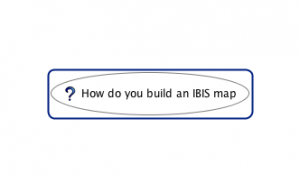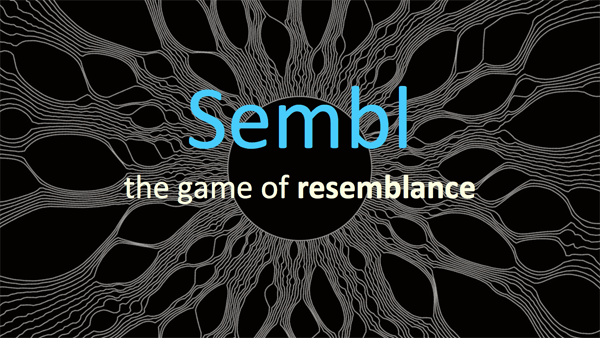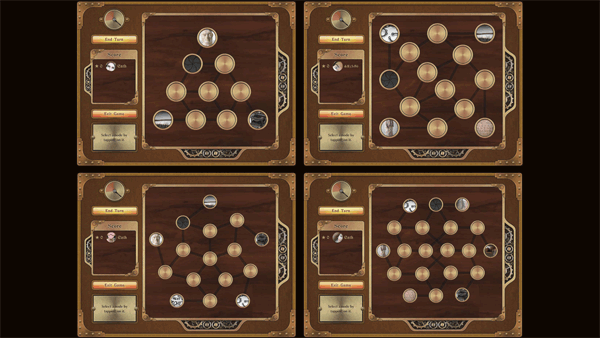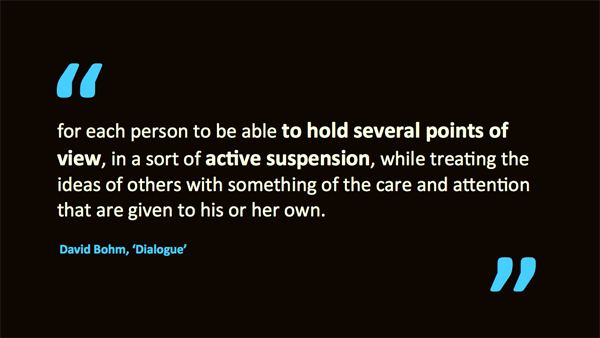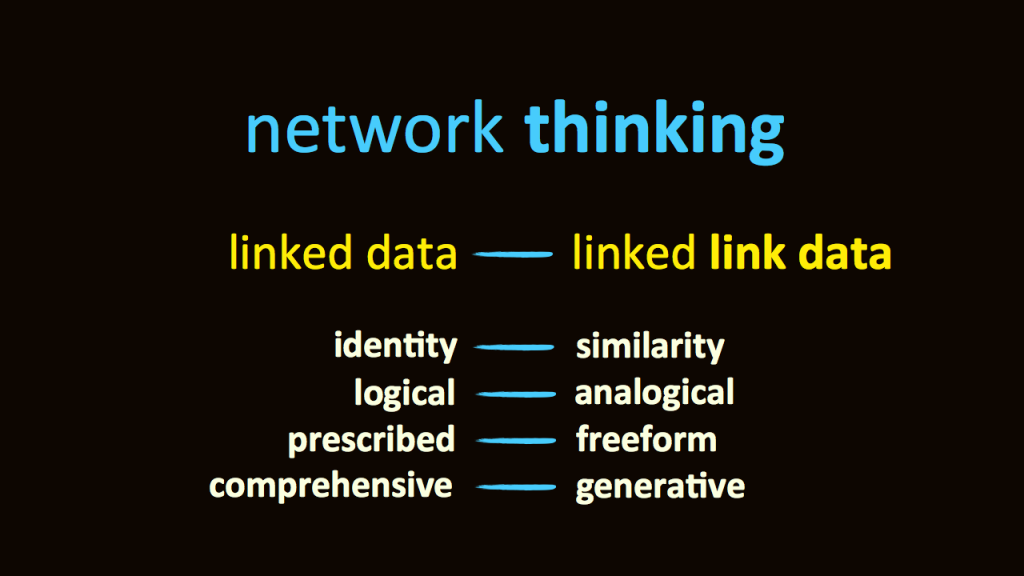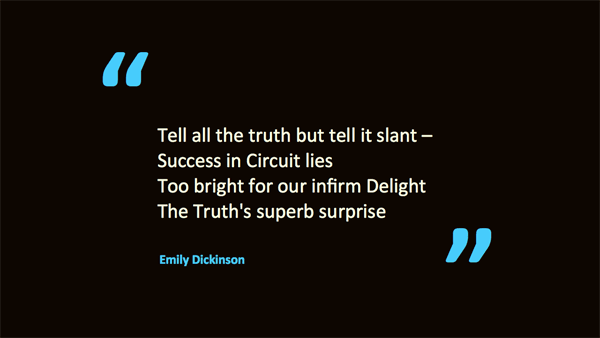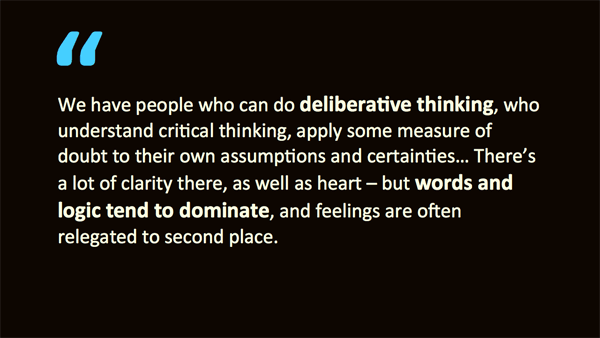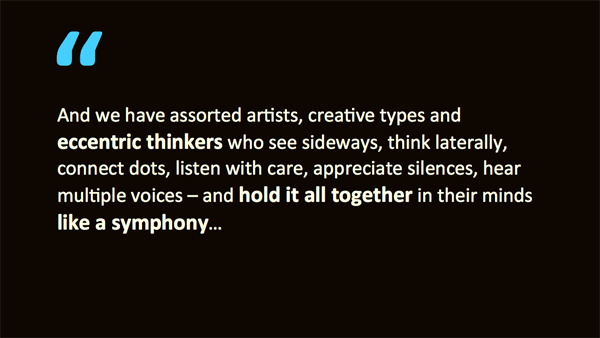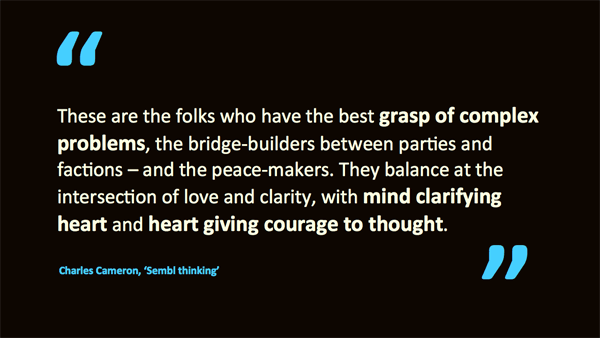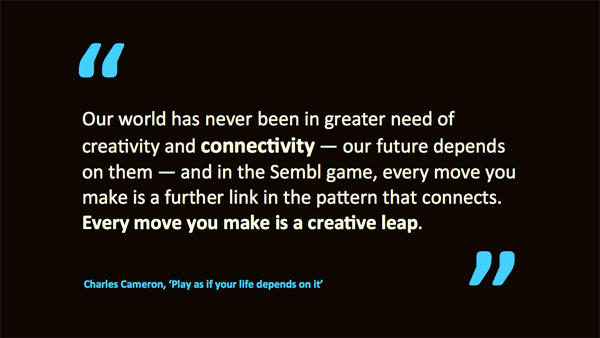When the problem is a moving target
Saturday, September 19th, 2015[ by Charles Cameron — the AUMF and “wickedness” ]
.
The essence of the insight that Horst Rittel and more recently Jeff Conklin bring to our attention under the rubric of “wicked problems” is the idea that what is viewed as a problem from one standpoint may be seen from another perspective as having a different emphasis, a different center of gravity — so that a move that solves a given problem from the first viewpoint may partially or wholly fail to solve it from that second perspective.
Add to that, the idea that the problem may itself morph as circumstances vary over time — as some interested parties drop out and others become interested, deadlines pass and new techniques and avenues of approach arise — and it becomes clear that the naive label “the problem” covers something far closer to an evolving and poorly defined entity than to one that is clearly defined and unchanging.
**
Gregory Johnsen had a fine piece on the Authorization for the Use of Military Force (AUMF) in Buzzfeed titled 60 Words And A War Without End: The Untold Story Of The Most Dangerous Sentence In U.S. History. Those sixty words say:
That the President is authorized to use all necessary and appropriate force against those nations, organizations, or persons he determines planned, authorized, committed, or aided the terrorist attacks that occurred on September 11, 2001, or harbored such organizations or persons in order to prevent any future acts of international terrorism against the United States by such nations, organizations or persons.
In his extensive commentary on how those words have been interpreteted, he writes:
Unbound by time and unlimited by geography, the sentence has been stretched and expanded over the past decade, sprouting new meanings and interpretations as two successive administrations have each attempted to keep pace with an evolving threat while simultaneously maintaining the security of the homeland. In the process, what was initially thought to authorize force against al-Qaeda and the Taliban in Afghanistan has now been used to justify operations in several countries across multiple continents and, at least theoretically, could allow the president — any president — to strike anywhere at anytime. What was written in a few days of fear has now come to govern years of action.
**
It seems to me somewhat naive as a general principle to think that words framing in a problem and or solution from one perspective, in one time, and under one set of circumstances, will necessarily “fit” it some later time, under changed circumstances and perhaps from a different perspective.
One could surely apply these words of Conklin’s in Wicked Problems & Social Complexity to the AUMF:
Moreover, the field is changing so fast that new options become available, and others drop into oblivion, almost every day.
**
My question is: what do we do about the fluidity of change in a world of verbally-fixed laws? And I see that as an inevitable question arising in light of Lao Tzu‘s twin dicta which I have variously phrased or seen phrased as:
The pronounceable name isn’t the unpronounceable name The flow that can be capped isn’t the overflowing flow The quantity that can be counted is not the unaccountable quality No way the way can be put into words The problem that can be described isn’t our actual situation the path that can be mapped is not the pathless path
and so forth.. or as Korzybski has it:
the map is not the territory
